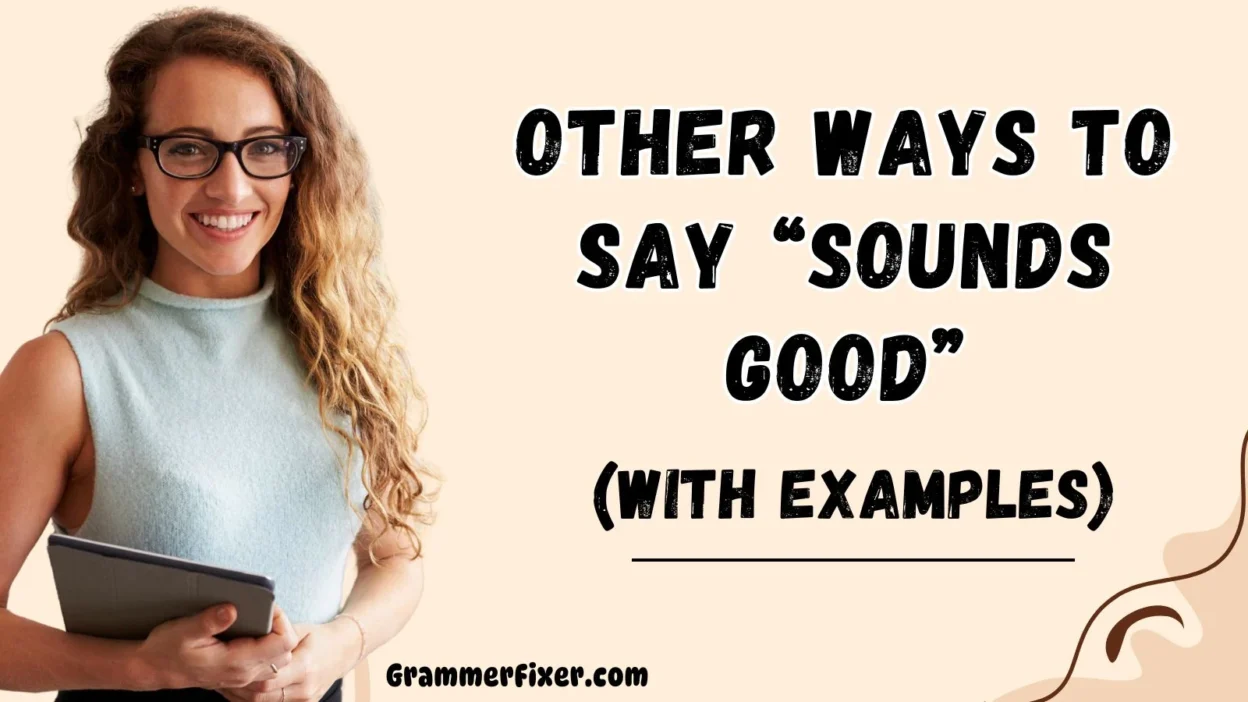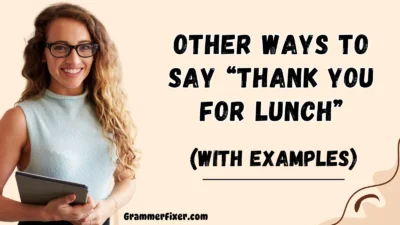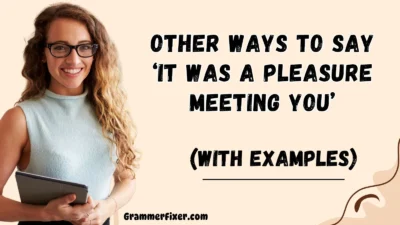Finding the right words in professional communication isn’t just about clarity — it’s also about tone, empathy, and sincerity. Whether you’re replying to an email, confirming a meeting, or agreeing on a proposal, saying “sounds good” can sometimes feel too casual or overused. Luckily, there are many warmer, more thoughtful alternatives that still get the point across while adding a personal or polished touch.
Below, you’ll find 30 professional and meaningful alternatives — each with context, best use, and tone — to help you say “sounds good” with confidence.
What Does “Sounds Good” Mean?
The phrase “sounds good” is a casual way to say you agree with or accept a suggestion, plan, or idea. It often implies enthusiastic or willing participation, signaling that you’re on board with the direction or proposal.
While it’s friendly and easygoing, it might not always fit in formal or high-stakes conversations.
Is It Professional or Polite to Say “Sounds Good”?
Yes — but with caution. While “sounds good” is widely accepted in workplace communication, it’s considered semi-formal. In emails, meetings, or messages with colleagues or clients, it’s best used when the tone is relaxed and there’s existing familiarity.
For more formal interactions, a polished alternative may better reflect professionalism and respect.
Advantages and Disadvantages of Saying “Sounds Good”
Advantages:
- Friendly and easy to understand
- Encourages open communication
- Shows prompt agreement
Disadvantages:
- Can seem too casual or vague
- May not convey thoughtfulness or authority
- Risks being overused or misinterpreted in formal contexts
1. That Works for Me
Meaning: I’m happy with the plan or decision.
Explanation: A clear and neutral way to confirm that something is acceptable to you.
Scenario Example: “Let’s meet at 3 PM?” → “That works for me.”
Best Use: Scheduling, timeline discussions.
Tone: Polite, collaborative, flexible.
2. Sounds Like a Plan
Meaning: I agree and support the suggested idea.
Explanation: Slightly enthusiastic and informal, showing you’re on board.
Scenario Example: “I’ll bring the slides, and you’ll handle Q&A.” → “Sounds like a plan!”
Best Use: Team meetings, project alignment.
Tone: Warm, agreeable.
3. I’m on Board
Meaning: I fully support the idea or decision.
Explanation: Expresses active participation and agreement.
Scenario Example: “We’re moving forward with the new strategy.” → “I’m on board.”
Best Use: Project launches, proposals.
Tone: Professional, confident.
4. Certainly
Meaning: Absolutely, I agree or will comply.
Explanation: A formal affirmation used in polite and respectful exchanges.
Scenario Example: “Can we have the documents by Friday?” → “Certainly.”
Best Use: Formal emails, client responses.
Tone: Respectful, professional.
5. That’s Fine by Me
Meaning: I have no objections to this plan.
Explanation: Communicates acceptance in a relaxed, non-confrontational way.
Scenario Example: “Can we switch to Tuesday instead?” → “That’s fine by me.”
Best Use: Scheduling, internal messages.
Tone: Casual, friendly.
6. Absolutely
Meaning: Strong agreement and enthusiasm.
Explanation: Confirms your full support with energy.
Scenario Example: “Would you be okay to present next week?” → “Absolutely!”
Best Use: Meetings, verbal affirmations.
Tone: Confident, encouraging.
7. I Agree
Meaning: I share the same opinion or support the idea.
Explanation: Simple yet direct affirmation.
Scenario Example: “The new design is more user-friendly.” → “I agree.”
Best Use: Discussions, feedback.
Tone: Clear, respectful.
8. Sure Thing
Meaning: Informal way to say yes or okay.
Explanation: Friendly, relaxed phrase for agreement.
Scenario Example: “Can you join the call at 2?” → “Sure thing!”
Best Use: Internal chats, casual updates.
Tone: Approachable, easygoing.
9. Please Proceed
Meaning: You’re giving permission to continue.
Explanation: Very formal and often used when delegating or approving.
Scenario Example: “Should I begin the analysis?” → “Please proceed.”
Best Use: Approvals, formal instructions.
Tone: Authoritative, formal.
10. Let’s Do It
Meaning: I’m ready and agree to begin.
Explanation: Signals enthusiasm and willingness to participate.
Scenario Example: “We’ll kick off the campaign Monday.” → “Let’s do it!”
Best Use: Motivational conversations, teamwork.
Tone: Energetic, team-focused.
11. That’s a Solid Plan
Meaning: I fully support the proposed approach.
Explanation: This phrase communicates agreement while complimenting the plan’s quality.
Scenario Example: “We’ll roll out the update in two phases.” → “That’s a solid plan.”
Best Use: Strategy discussions, team planning.
Tone: Affirmative, respectful, confident.
12. I’m In
Meaning: I’m ready to participate or agree to the decision.
Explanation: Short and energetic way of saying you’re fully involved.
Scenario Example: “We’re organizing a brainstorming session for Friday.” → “I’m in.”
Best Use: Invitations, collaborative projects.
Tone: Enthusiastic, informal.
13. That’s Perfect
Meaning: It suits the situation or need ideally.
Explanation: Shows enthusiastic approval with a positive tone.
Scenario Example: “Can we meet at noon instead?” → “That’s perfect.”
Best Use: Scheduling, alignment on preferences.
Tone: Cheerful, warm, affirming.
14. Go Ahead
Meaning: I give my permission to proceed.
Explanation: A direct way to show that someone has your approval to move forward.
Scenario Example: “Shall I start the draft?” → “Go ahead.”
Best Use: Delegation, approvals.
Tone: Simple, assertive.
15. Agreed
Meaning: I share the same opinion or position.
Explanation: Succinct confirmation, often used in written or formal contexts.
Scenario Example: “We need more data before launching.” → “Agreed.”
Best Use: Team consensus, meeting notes.
Tone: Professional, concise.
16. That’s Acceptable
Meaning: I approve this as a viable option.
Explanation: A measured and formal way to show agreement.
Scenario Example: “The delivery date has moved to next Wednesday.” → “That’s acceptable.”
Best Use: Business correspondence, formal interactions.
Tone: Respectful, neutral.
17. Looks Good
Meaning: Everything appears correct or satisfactory.
Explanation: Slightly informal, usually used for visual or written material.
Scenario Example: “Here’s the final version of the slide deck.” → “Looks good.”
Best Use: Document reviews, visual checks.
Tone: Casual, brief.
18. I’m Happy With That
Meaning: This outcome or suggestion works well for me.
Explanation: Expresses both approval and personal satisfaction.
Scenario Example: “We’ll proceed with Plan B instead.” → “I’m happy with that.”
Best Use: Decision-making, compromise.
Tone: Warm, agreeable.
19. Sure
Meaning: A casual affirmation or agreement.
Explanation: Common and widely understood, but can feel vague without context.
Scenario Example: “Want to review this together later?” → “Sure.”
Best Use: Quick verbal responses, informal chats.
Tone: Casual, friendly.
20. That’s Reasonable
Meaning: The suggestion is fair and makes sense.
Explanation: Shows thoughtful agreement while also considering practicality.
Scenario Example: “We’ll need an extra day to test the updates.” → “That’s reasonable.”
Best Use: Conflict resolution, timeline shifts.
Tone: Diplomatic, understanding.
21. Fine With Me
Meaning: I have no problem or objection.
Explanation: A calm, flexible way to accept a decision.
Scenario Example: “We can skip the meeting if needed.” → “Fine with me.”
Best Use: Informal alignment, rescheduling.
Tone: Easygoing, accommodating.
22. All Set
Meaning: Everything is confirmed and ready.
Explanation: Often used to signal readiness or that no further action is needed.
Scenario Example: “Do you need anything else before we launch?” → “All set.”
Best Use: Task completion, meeting prep.
Tone: Reassuring, organized.
23. Works for Everyone
Meaning: This decision suits the group.
Explanation: Encourages consensus and group harmony.
Scenario Example: “Should we meet at 10 AM?” → “If that works for everyone, let’s do it.”
Best Use: Team-based decisions, collaborative planning.
Tone: Inclusive, thoughtful.
24. Understood
Meaning: I acknowledge and comprehend what’s been said.
Explanation: Used to confirm you’ve received and processed information.
Scenario Example: “We’ll be using the new protocol starting Monday.” → “Understood.”
Best Use: Instructions, briefings.
Tone: Direct, respectful.
25. Let’s Move Forward
Meaning: I agree and support taking the next step.
Explanation: Encourages progress and signals action.
Scenario Example: “Shall we start development next week?” → “Let’s move forward.”
Best Use: Decision-making, project phases.
Tone: Assertive, motivating.
26. You’ve Got It
Meaning: Consider it done; I’ll take care of it.
Explanation: Confirms understanding and commitment.
Scenario Example: “Can you handle the feedback response?” → “You’ve got it.”
Best Use: Task confirmation, team coordination.
Tone: Confident, informal.
27. Will Do
Meaning: I will take action as requested.
Explanation: A short, clear phrase to show commitment.
Scenario Example: “Please update the budget sheet.” → “Will do.”
Best Use: Task assignments, follow-ups.
Tone: Crisp, reliable.
28. It’s a Go
Meaning: Approved and ready to start.
Explanation: Informal but decisive way to greenlight a plan.
Scenario Example: “Should we proceed with Plan C?” → “It’s a go.”
Best Use: Creative teams, startup culture.
Tone: Upbeat, confident.
29. I Can Work With That
Meaning: It may not be ideal, but it’s acceptable.
Explanation: Shows cooperation and flexibility even if compromise is involved.
Scenario Example: “The venue changed to the downtown office.” → “I can work with that.”
Best Use: Change management, compromises.
Tone: Cooperative, adaptable.
30. Perfectly Understood
Meaning: I clearly understand and agree.
Explanation: Formal and respectful phrase for acknowledging instructions or direction.
Scenario Example: “You’ll be taking lead on this part.” → “Perfectly understood.”
Best Use: Client communication, leadership acknowledgment.
Tone: Formal, polished.
Conclusion
Using alternatives to “sounds good” not only elevates your communication style but also helps you express warmth, clarity, and intentionality. Whether you’re aiming for a more professional tone, fostering team alignment, or simply trying to sound less repetitive, these 30 phrases give you the vocabulary to do so effectively.
From “That works for me” to “Perfectly understood,” each alternative brings a unique tone to your conversations — whether written or spoken. Keep this list handy for your next email, chat, or meeting and feel the difference it makes in how your messages are received.



